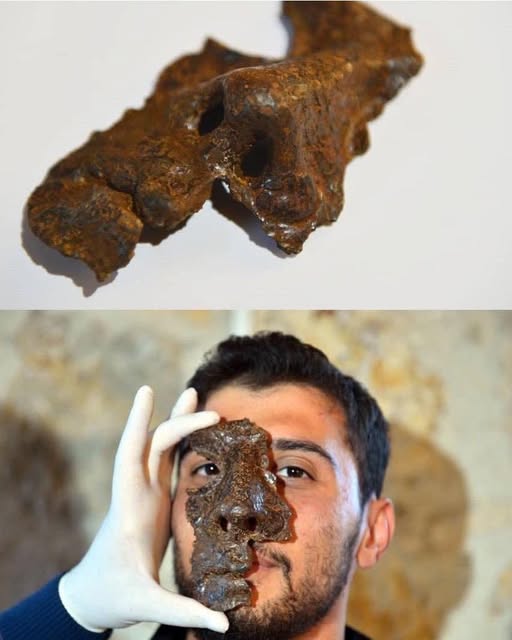
1,800-Year-old Iron Roman Mask Found in the Ancient City of Karabük
A 1,800-year-old iron mask thought to belong to a Roman soldier was found in the Hadrianaupolis Ancient City in Karabük.

Excavations in the Hadrianaupolis Ancient City, located in the Eskipazar district of Karabük, Turkey have been continuing since 2003. The excavations in the ancient city of Hadrianaupolis, which is estimated to have been used from the 1st century BC to the 8th century AD in the village of Budaklar, were carried out by Karabük University Archeology Department Lecturer ᴀssoc. Dr. It continues under the chairmanship of Ersin Çelikbaş.
In the ancient city, where excavations continue for 12 months of the year, this season, the focus has been on a square planned structure whose function has not been resolved yet. From the fortification wall in the building been in question, it is estimated that this was a military building. An iron mask was unearthed during the work done inside the structure.
Stating that the history of the inner regions of the Western Black Sea Region has not been fully clarified yet, the head of the excavation, ᴀssoc. Dr. Çelikbaş said, “We continue to illuminate the history of the region with our works. During our excavations, we found important data showing the existence of the Roman Empire in the region. This mask also belongs to a Roman soldier. A Roman cavalry face mask, a piece of helmet.” says.

Fragment of a Roman soldier’s helmet.
Stating that there could be a Roman garrison and a military base in Hadrianaupolis, Çelikbaş said, “Rome has planned to make its defense at the far end by building bases against all kinds of dangers that may come from the Black Sea Region to its own geography. We think that one of these defensive military cities was Hadrianaupolis. The mask fragment is from the imperial period. It most likely belongs to the 3rd century when we look at similar examples and stratification history.” says.
During the excavations carried out in the southern necropolis of the ancient city last October, an iron ring dating back 1,800 years was found inside the rock tombs. On the agate stone on the ring, it was determined that the character of Pan, known as the god of shepherds in Greek mythology, was carved in very small sizes.
The movable ones from the findings obtained during the studies in the ancient city of Hadrianaupolis are taken to the museums in the surrounding provinces, while the immovables are preserved in their place.



